When your baby's first little tooth erupts, it gives rise to mixed emotions. On one hand, there's joy, because your little one is growing and on the other hand, there's horror, if you're still breastfeeding! For most babies, the first tooth makes an appearance anywhere from four months onward and some babies are even born with teeth. On the other end of the spectrum, you may have a late bloomer, whose first tooth takes its own sweet time, maybe even till he's a year old!

But you're obviously not going to wait till his first birthday to start solids! Since the recommended age for starting to wean is 6 months, many babies don't depend upon their teeth to eat. Besides, the first teeth that appear are usually the front teeth, which aren't used for chewing anyway. (Their gums are enough for that, which your poor nipples probably know by now!)
For most babies till the age of 8 months, the puree and porridge phase goes by smoothly. But many Moms worry about their child's diet after this phase, when they start thinking about introducing lumpier textures in their baby's diet. Now you don't need to worry if your baby still doesn't have any teeth yet - we assure you, he's not going to starve! Keep breastfeeding him for as long as you want, and as for foods, we've drawn up a list of 50 foods you can feed your baby, even if he's still waiting for that first tooth!
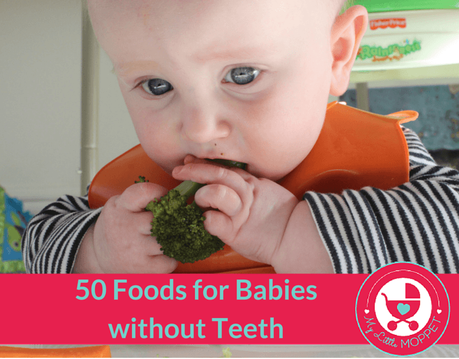
Fruit
Most fruits can be fed directly, as long as they're ripe. For starters, avoid the peel and ensure there are no seeds. For harder fruits, you can stew them for a few minutes to make them soft.
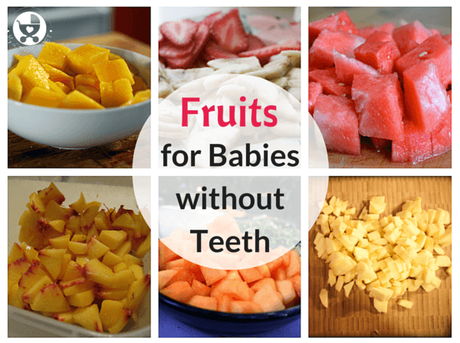
1. Bananas - Can be fed as it is, just ensure that it is ripe enough
2. Avocado - Go for perfectly ripe avocados, or it'll be too hard for baby
3. Peach - Feed ripe peaches directly
4. Mango - Go for ripe ones, but avoid the extremely squishy ones
5. Strawberries - Hull before offering to baby
6. Watermelon - Remove the seeds and ensure only the red parts are given
7. Pear - Peel and give baby; if it seems to hard, stew it for some time
8. Apple - Peel before giving baby; if the apple is too crunchy, stew it first
9. Muskmelon - Can be given directly, if it is ripe and soft enough
Vegetables
Vegetables are hard for babies without teeth to eat directly, so will require some steaming or boiling. Cook till just soft and not any more, or else they'll turn into mush and won't be the texture you're looking for.
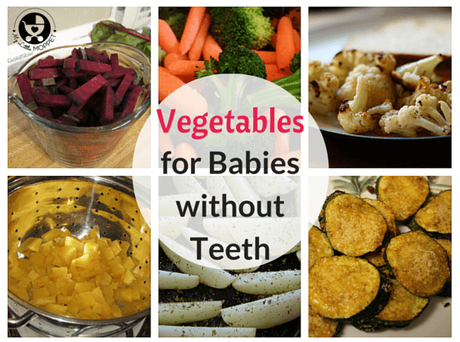
10. Carrot - steam or boil to make it soft, but don't overcook
11. Cauliflower - Roast or steam; take care to prevent burning
12. Broccoli - Roast or steam lightly; it'll crumble if overcooked
13. Potato - Boil or steam well till soft
14. Pumpkin - Cook for a short while till the cubes are just soft
15. Zucchini - Steam or cook lightly till soft
16. Beetroot - Steam or boil till quite soft
Breakfast
Many of these breakfast ideas can be made for the whole family or older kids as well. Choose from Indian and other cuisines so your baby gets used to sweet and savory breakfasts. You can add fruit on the side as well.

17. Eggless Apple Whole Wheat Pancake - You can skip the salt if you like
18. Banana Toast - You can also try almond milk
19. Waffles - You can use coconut milk or almond milk to make these
20. Vegetable Idli - You can start with only grated carrot and add more vegetables later on
21. Blueberry Oat Muffins - Substitute the milk with almond milk or baby formula
22. Scrambled Eggs - You can use coconut milk instead, and skip the salt
23. Oat Cereal - You can add pureed fruit for more bulk
24. Baby Omelette - You can skip the milk or add formula
25. Steamed Dosa - Serve this with chutney powder for babies
26. Banana Pancakes - Make your own pancake batter and use
Lunch/Dinner
Meals like lunch and dinner seem to be the biggest challenge for Moms of babies with no teeth, but there are many options. Adjust the salt content when you cook for baby - try adding spices instead to flavor the food.
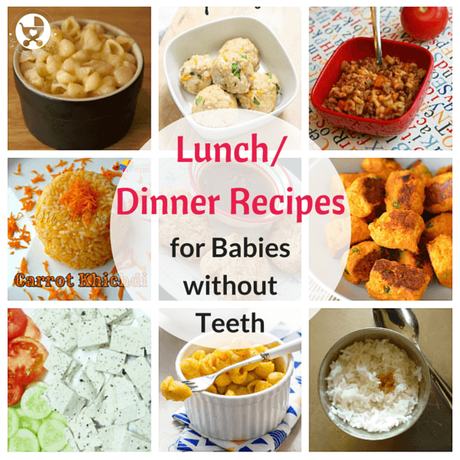
27. Flavored Paneer - Make sure the paneer is soft and not rubbery
28. Chicken Carrot Meatballs - You can also try plain chicken meatballs
29. Butternut Squash Risotto - You can use any short grained rice
30. Sweet Potato and Lentil Croquettes - Opt for cheese with less salt
31. Butternut Mac and Cheese - Skip the salt and curry, you can also replace the thyme with fresh herbs
32. Mini Aloo Paratha - Skip the salt; later you can try adding peas to the filling
33. Carrot Khichdi - You can also try this with beetroot
34. Bolognese Pasta - You can use chicken mince
35. Ghee Rice - Use homemade ghee for better results
36. Chicken Nuggets - You can use turkey or chicken here, be sure that you're using boneless pieces
Snacks
If you're trying to get baby to eat on a schedule, you can offer her these snacks when she gets hungry in between. Try to balance it like this: if she hasn't had any veggies all day, try with a veggie snack.
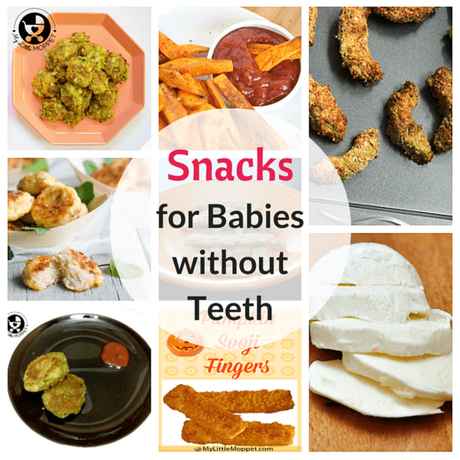
37. Soft Cheese
38. Sweet Potato Fries - Serve with homemade tomato sauce
39. Cauliflower Nuggets - Skip the salt; substitute breadcrumbs with powdered baby cereal
40. Spinach Fritters - Skip the chillies and chilly powder
41. Baked Avocado Fries - Substitute bread crumbs with powdered baby cereal
42. Pumpkin Sooji Fingers - Serve with homemade tomato sauce
43. Banana Oatmeal Fingers - You can also add a little of our Dry Fruit Powder
44. Broccoli Cheese Nuggets - Substitute bread crumbs with powdered baby cereal and use cheese with less salt
Dessert
While you don't need to make a sweet dish a daily affair, once in a while even baby deserves a treat! Making them less sweet will prevent a sweet tooth later, whenever the teeth come in!
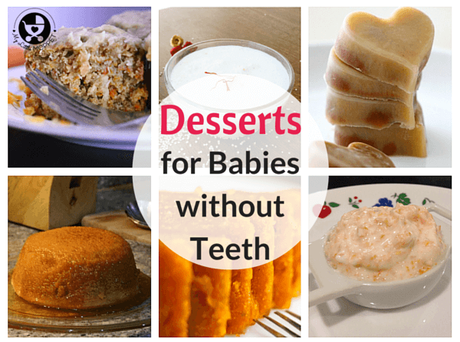
45. Carrot Cake - Skip the soda, and use almond or coconut milk
46. Samai Payasam - You can add a small amount of the dry fruit powder for taste
47. Fruit Yogurt - Avoid yogurt that is too sour
48. Frozen Applesauce Treats - Get the applesauce recipe here
49. Egg Pudding - Substitute the milk with coconut milk or almond milk
50. Wheat Halwa - Try not to make it too runny to give baby a chance to chew
Tips for feeding babies without teeth
1. Check the age recommendation on each recipe before feeding your baby.
2. Make sure you follow the 3 day rule with all new foods to be aware of any allergy.
3. Always be in the room with your baby when he's eating.
4. With a new food, introduce small amounts at a time.
5. In case of any doubt, consult a doctor.
Most babies will find a way to gnaw on their food, chew on it at the back of their mouths and swallow. They generally have a natural gagging reflex to prevent choking, so they'll spit out food that's may be dangerous - don't force it back down. With some trial and error, you'll soon find that your baby is able to enjoy most foods - you'll know when you see that loving toothless grin!
Lots of Love,

